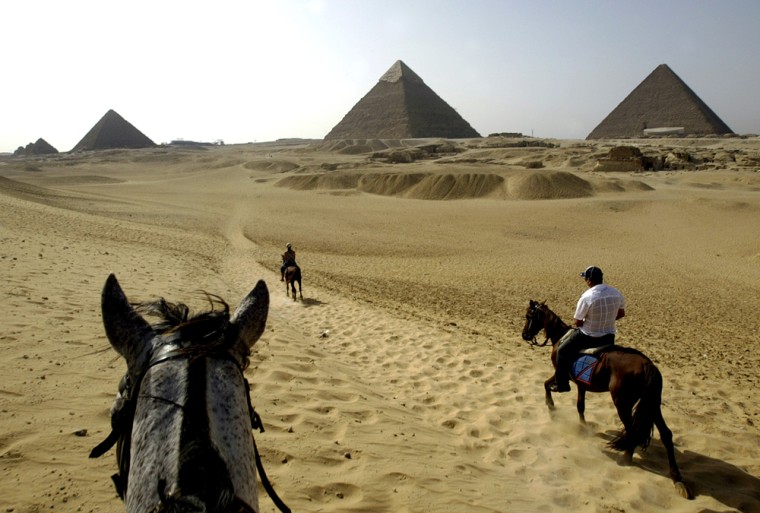A global competition to name the new seven wonders of the world is attracting widespread interest, with more than 20 million people voting so far, organizers say.
The Egyptian pyramids are the only surviving structures from the original list of seven architectural marvels. Long gone are the Hanging Gardens of Babylon, the Statue of Zeus at Olympia, the Temple of Artemis at Ephesus, the Mausoleum of Halicarnassus, the Colossus of Rhodes and the Pharos lighthouse off Alexandria. Those seven were deemed wonders in ancient times by observers of the Mediterranean and Middle East.
Candidates for the new list have been narrowed down to 21, including the Eiffel Tower, Statue of Liberty, Taj Mahal and Peru's Machu Picchu. The public can vote until July 6, 2007, by Internet or phone. The seven winners will be announced July 7 in Lisbon, Portugal.
Choosing world wonders has been a continuing fascination over the centuries. The United Nations Educational, Scientific and Cultural Organization, or UNESCO, keeps updating its list of World Heritage Sites, which now totals 830 places.
The "New 7 Wonders of the World" campaign was begun in 1999 by Swiss adventurer Bernard Weber, with almost 200 nominations coming in from around the world.
Weber "felt it is time for something new to bring the world together" and to "symbolize a common pride in the global cultural heritage," said Tia B. Viering, spokeswoman for the campaign.
Weber's Switzerland-based foundation aims to promote cultural diversity by supporting, preserving and restoring monuments. It relies on private donations and revenue from selling broadcasting rights.
Nominations were whittled down by public votes to 77 last year. Then a panel of architectural experts, chaired by former UNESCO chief Federico Mayor, shortened the list to 21. Interest has grown as Weber and his 10-member team visit the 21 sites. Their final visit will be March 6 to New York's Statue of Liberty.
In addition to the Statue of Liberty, Pyramids, Eiffel Tower, Taj Mahal and Machu Picchu, the finalists are the Acropolis; Turkey's Haghia Sophia; the Kremlin and St. Basil's Cathedral; the Colosseum; Germany's Neuschwanstein Castle; Stonehenge; Spain's Alhambra; the Great Wall; Japan's Kiyomizu Temple; the Sydney Opera House; Cambodia's Angkor; Timbuktu; Petra, Jordan; Brazil's Statue of Christ Redeemer; Easter Island; and Chichen Itza, Mexico.
